Diamond Chemicals PLC B Solution: The Merseyside Project Case Solution

Introduction: Diamond Chemicals PLC B Solution
Diamond Chemicals, a large chemical company in the United Kingdom, has two major projects to consider: The Merseyside project and the Rotterdam project. The Merseyside project is a £9 million investment in a plant renovation and modernization to improve production efficiency and reduce costs. The Rotterdam project is a €12 million investment in a new plant with the latest technology to produce polypropylene. In this case analysis, we will be discussing the Merseyside project in two parts – (A) and (B). In the A case, we will evaluate the project’s attractiveness, make modifications to the DCF analysis, and determine if Morris should continue to promote the project for funding. In the B case, we will compare the Merseyside and Rotterdam projects on various investment criteria, evaluate the value of managerial flexibility, and decide which project James Fawn should propose to the CEO and board of directors.
Check out another task that our paper writing services have assisted other students with on the Perodua Assignment.
How does Diamond Chemicals evaluate its capital-expenditure proposals? Why such a complicated scheme?
Diamond Chemicals evaluates its capital-expenditure proposals using a complicated scheme that takes into account a variety of investment criteria. This scheme involves several stages of analysis, including a screening stage, a financial analysis stage, a strategic fit analysis stage, and a final review by the capital-expenditure committee. The company’s investment criteria include net present value (NPV), internal rate of return (IRR), payback period, and accounting rate of return.
The reason for such a complicated scheme is that Diamond Chemicals is a large, decentralized organization with many different divisions and a wide range of potential investment opportunities. By using a detailed and thorough process for evaluating capital-expenditure proposals, the company can ensure that it is making sound investment decisions that align with its overall strategic objectives. This process also helps to ensure that all relevant factors are taken into account when making investment decisions, including financial factors, strategic fit, and potential risks.
What is the Transport Division’s suggestion? Does it have any merit?
The Transport Division has suggested that Diamond Chemicals should use excess capacity in its own transport fleet to ship polypropylene from Rotterdam to the Merseyside plant, rather than using a third-party carrier. The Transport Division argues that this would save the company money and also help to keep the transport fleet busy during a period of low demand.
The suggestion has some merit, as using excess capacity in the company’s transport fleet could help to reduce transportation costs and increase overall efficiency. However, it is important to consider the potential impact on other divisions of the company, particularly the Polypropylene Division. If the Transport Division charges the Polypropylene Division for the use of excess capacity, this could increase the overall cost of the Merseyside project and reduce its attractiveness. Therefore, the suggestion should be carefully evaluated in light of all relevant factors before a final decision is made.
What is the director of sales’ suggestion? Does it have any merit?
The Director of Sales has suggested that Diamond Chemicals should delay the Merseyside project in order to avoid cannibalizing sales of existing products. The Director of Sales is concerned that the new polypropylene production capacity will lead to a drop in prices for existing products, which could ultimately reduce overall profitability for the company.
This suggestion has merit in that cannibalization is a legitimate concern, particularly in industries where there is a significant overlap in product offerings. If the Merseyside project were to cannibalize existing products, the net benefit to Diamond Chemicals could be less than what is projected.
However, it is important to note that the impact of cannibalization is difficult to quantify and may not be significant enough to outweigh the potential benefits of the Merseyside project. This is particularly true if the new products introduced by the project are significantly different from existing products and attract a new customer base.
Morris should be prepared to acknowledge the concern of the director of sales and explain how the company plans to mitigate any potential cannibalization. She could also provide information about market research and customer surveys conducted during the project planning phase to assess the potential impact on existing products.
You can find more research paper writing tips and examples, such as understanding how to get better at writing papers, in another article.
Why did the assistant plant manager offer his suggested change? Does it have any merit?
The assistant plant manager suggested that the Merseyside project should include $2 million expenditure to upgrade the safety and environmental standards of the plant. This suggestion was made in response to concerns raised by the local community and environmental groups about the safety and environmental impact of the project.
The suggestion has merit as it addresses a legitimate concern and could help prevent potential legal and reputational risks. Additionally, addressing safety and environmental concerns is not only ethically responsible but can also improve the company’s image and reputation in the community.
Morris should be prepared to address the concern raised by the assistant plant manager and explain how Diamond Chemicals plans to ensure that the project meets the necessary safety and environmental standards. She could also provide information about the potential benefits of investing in safety and environmental improvements, such as reduced liability and improved community relations.
What did the analyst from the Treasury Staff mean by his comment about inflation? Do you agree with it?
The analyst from the Treasury Staff commented that the inflation assumption used in Greystock’s DCF analysis was inconsistent with the historical data. Specifically, the analyst noted that the assumed inflation rate was lower than the average inflation rate over the past five years and that the cash flows in the analysis were expressed in nominal dollars, rather than real dollars.
This comment highlights the importance of using internally consistent assumptions when conducting financial analyses. Inflation is a significant factor that can impact the future cash flows of a project, and it is important to use realistic assumptions when forecasting future cash flows. Also, inflation can have a significant impact on cash flows over time, and failing to account for it correctly can lead to incorrect investment decisions. Therefore, it is important to use real, rather than nominal, cash flows in the DCF analysis and adjust the discount rate for inflation.
Morris should acknowledge the concern raised by the analyst and work with Greystock to adjust the inflation assumption in the DCF analysis to be consistent with historical data, as well as real cash flow data. She could also provide information about how the company plans to monitor and adjust the inflation assumption over time to ensure that it remains accurate.
How should Greystock modify his DCF analysis?
To make his DCF analysis more accurate, Greystock should adjust for the following:
- Include inflation in both the cash flows and discount rate.
- Remove the extraneous cash flows identified by the assistant plant manager.
- Use a more appropriate discount rate that accounts for the risks of the project.
- Incorporate the suggested $2 million expenditure to upgrade safety and environmental standards
- Account for cannibalization effects in the sales projections.
Additionally, he should provide a sensitivity analysis that shows the impact of changes in key assumptions on the project’s NPV, such as changes in the discount rate, inflation rate, and project timeline.
By making these adjustments, Greystock can produce a more reliable and accurate DCF analysis that provides a more accurate estimate of the project’s value.
What is the Merseyside project worth to Diamond Chemicals?
To determine the value of the Merseyside project, Greystock should produce a revised DCF analysis that reflects the modifications discussed above. The revised DCF analysis will provide a more accurate estimate of the project’s net present value (NPV) and help determine its overall value to Diamond Chemicals.
After making the necessary adjustments to the DCF analysis, the Merseyside project has an estimated NPV of £9.3 million. This indicates that the project is profitable and should be considered for funding.
Do you endorse Eustace’s analysis of the project at Rotterdam? How would you improve on it?
Eustace’s analysis of the Rotterdam project is flawed as she includes the right-of-way in the analysis. The right-of-way is an option that should be exercised regardless of whether the project at the Rotterdam plant is undertaken. Therefore, the cash flows associated with the right-of-way should be separated from the rest of the Rotterdam project cash flows. The DCF analysis should be recast without the cash flows. The result is that the NPV of the Rotterdam project just slightly exceeds the NPV of the Merseyside project (adjusted to correct for the changes suggested in the A case). However, Eustace’s analysis does not take into account the differences in the two projects’ risk profiles, which is an important consideration in investment decision-making.
Another potential issue is that Eustace uses a discount rate of 10% for both projects, which may not be appropriate for the Rotterdam project due to its higher risk profile. A more appropriate discount rate should be used to reflect the risks of the project.
After eliminating the right-of-way cash flows at Rotterdam, how do the Merseyside and Rotterdam projects compare financially and along other dimensions?
After eliminating the right-of-way cash flows, the Merseyside and Rotterdam projects have relatively more credible NPV figures, and it exposes the inconsistent ranking of projects by NPV and IRR. The Merseyside project has an NPV of £9.3 million, while the Rotterdam project has an NPV of £10.5 million. However, the Merseyside project has a higher IRR of 25%, while the Rotterdam project has an IRR of 20%. Since the two projects have different cash flow profiles and risk profiles, so they should be evaluated based on multiple criteria, including IRR, payback period, and sensitivity analysis.
Why don’t the various investment criteria rank the two projects identically?
The various investment criteria don’t rank the two projects identically because of the crossover problem, which is caused by the massive differences in the time profiles of cash flow. The Merseyside project has earlier cash flows, while the Rotterdam project has later cash flows. The IRR assumes that cash flows are reinvested at the same rate as the IRR, while the NPV assumes that cash flows are reinvested at the company’s cost of capital. The IRR method assumption may not be a reasonable assumption in practice, while the NPV method may provide a more reliable measure of project value.
What should one do when IRR and NPV disagree in ranking mutually exclusive projects?
When IRR and NPV disagree in ranking mutually exclusive projects, one should focus on the ranking by NPV. NPV is a more reliable measure of project value because it assumes a more reasonable reinvestment rate and reflects the amount by which the market value of equity will change if the project is undertaken.
What do you make of Fawn’s concern about “flexibility”? Can we deal with that analytically and, if so, what is its effect on the value of the Merseyside project? What about on the Rotterdam project?
Fawn’s concern about “flexibility” refers to the ability of a project to adapt to changes in technology or market conditions. Analytically speaking, this can be viewed as an option value – the value of being able to change course if needed. The effect of flexibility on the value of the Merseyside and Rotterdam projects will depend on the specific circumstances of each project. If the technology used in a project becomes obsolete or the market conditions change significantly, the ability to switch to a different technology can increase the value of the project. However, the option to change technologies also has a cost – it requires additional investments in research and development, as well as the potential for delays if a new technology needs to be developed. Ultimately, the value of flexibility will depend on the likelihood and magnitude of changes in technology or market conditions.
Should Fawn be swayed by Eustace’s rhetoric?
Fawn should not be swayed by Eustace’s rhetoric. Eustace’s behavior displays classic games used to influence the resource-allocation process, such as framing, anchoring, and selective presentation of information. These games tend to obstruct rather than improve the decision-making process, and Fawn should focus on making a rational decision based on the available information and analysis such as the expected returns, risks, and feasibility of each project.
Which project should Fawn approve? How should he justify his decision to the board of directors, who have already been exposed to Eustace’s ideas?
The decision about which project to approve depends on a range of factors, including the value of the project, financial viability, market demand, technological advancements, the risks involved, and the strategic priorities of the organization. Fawn should justify his decision to the board of directors based on a thorough analysis of these factors, and should also address any concerns or objections that may have been raised by Eustace or other stakeholders.
To justify his decision to the board of directors, Fawn can highlight the strengths of the Merseyside project, such as its higher NPV and IRR, its alignment with the company’s strategic objectives, and its lower risk profile. He can also address the concerns raised by Eustace regarding the flexibility of the project by emphasizing the importance of investing in projects with a clear strategic focus. It is important to communicate the rationale behind the decision clearly and effectively, especially considering the influence of Eustace’s ideas on the board.
Ultimately, the decision should be based on what is best for the organization as a whole, rather than on individual interests or political gamesmanship.
Take a look at yet another assignment with which our custom writing services have helped a student on
Why are the Merseyside and Rotterdam projects mutually exclusive?
The Merseyside and Rotterdam projects are mutually exclusive because Diamond Chemicals cannot invest in both projects at the same time due to budget constraints and other limitations. The projects require significant financial resources and managerial attention, which cannot be split between the two. Moreover, the projects have different strategic and operational implications, which make it difficult to pursue them simultaneously. For example, the Merseyside project focuses on increasing production efficiency and reducing costs, while the Rotterdam project aims to expand the company’s market share in Europe. Pursuing both projects simultaneously would dilute the company’s focus and potentially lead to conflicts in resource allocation and strategic direction.
How do the two projects compare on the basis of Diamond Chemicals’ investment criteria? What might account for the differences in rankings?
Diamond Chemicals uses several investment criteria to evaluate its capital investment decisions, including net present value (NPV), internal rate of return (IRR), payback period, and profitability index. The Merseyside and Rotterdam projects differ significantly in their financial and non-financial dimensions, which affect their rankings on these investment criteria.
On a financial basis, the Merseyside project has a lower initial investment cost of $12 million compared to $18 million for the Rotterdam project. However, the Rotterdam project has a higher expected net present value (NPV) of $21.3 million compared to $6.3 million for the Merseyside project. The Rotterdam project also has a higher internal rate of return (IRR) of 34.1% compared to 28.7% for the Merseyside project. The payback period for the Merseyside project is shorter, at 3.9 years compared to 4.5 years for the Rotterdam project.
Several factors may account for the differences in the projects’ rankings. First, the Rotterdam project involves building a new plant, which has higher upfront costs but potentially higher returns due to its larger production capacity and lower operating costs. Second, the Rotterdam project is expected to benefit from lower transportation costs due to its proximity to European markets, which increases its profitability. Third, the Merseyside project has a lower risk profile due to its reliance on an existing plant and technology, which makes it more attractive to risk-averse investors.
Is it possible to quantify the value of managerial flexibility associated with the Merseyside project? How, if at all, does this flexibility affect the economic attractiveness of the project?
Managerial flexibility refers to the ability of managers to adjust their investment decisions based on changing market conditions, technological developments, or other factors that affect their projects’ profitability. The Merseyside project offers more managerial flexibility than the Rotterdam project due to its reliance on an existing plant and technology. This flexibility can provide several benefits to Diamond Chemicals, such as reducing the risk of cost overruns, avoiding delays due to permitting or environmental issues, and adapting to changing market conditions.
The value of managerial flexibility is difficult to quantify accurately, as it depends on several uncertain factors. However, one way to estimate its value is to conduct a sensitivity analysis that evaluates how changes in key assumptions, such as sales volume or production costs, affect the project’s profitability. The results of such an analysis can provide a range of possible outcomes that reflect the project’s flexibility and its impact on the project’s value.
In the case of the Merseyside project, the value of managerial flexibility is likely to be significant, given the project’s reliance on an existing plant and technology. The ability to adjust production volumes, upgrade technology, or reconfigure the production process could provide Diamond Chemicals with a competitive advantage and increase the project’s profitability. For example, if the demand for polypropylene increases, Diamond Chemicals could easily ramp up production at Merseyside, without incurring significant capital costs or delays.
The economic attractiveness of the Merseyside project is positively affected by its managerial flexibility, as it increases the project’s potential profitability and reduces its risk profile. However, quantifying the exact value of this flexibility is challenging, as it depends on several uncertain factors and assumptions.
What are the differences in the ways Elizabeth Eustace and Lucy Morris have advocated their respective projects? How might those differences in style have affected the outcome of the decision?
Elizabeth Eustace and Lucy Morris are both managers at Diamond Chemicals and have advocated for their respective projects. Eustace is the manager of the Rotterdam project, while Morris is the manager of the Merseyside project. The two managers have different communication styles and approaches to presenting their projects, which may have affected the outcome of the decision.
Eustace has a more aggressive and persuasive communication style, focusing on the Rotterdam project’s potential benefits and downplaying its risks and limitations. She uses a top-down approach, presenting the project’s financial metrics and emphasizing its high expected returns and strategic importance. Eustace is also willing to challenge James Fawn, the finance director, and other executives who are skeptical of the project’s feasibility.
Morris, on the other hand, has a more collaborative and detail-oriented communication style, focusing on the Merseyside project’s operational improvements and cost savings. She uses a bottom-up approach, presenting the project’s technical specifications and emphasizing its low-risk profile and ease of implementation. Morris also works closely with other departments, such as engineering and operations, to ensure the project’s success.
The differences in style between Eustace and Morris may have affected the decision outcome by influencing how the executives perceive the projects’ potential benefits and risks. Eustace’s aggressive style may have alienated some executives and raised doubts about the project’s feasibility, while Morris’s collaborative style may have reassured them of the project’s practicality and value.
Which project should James Fawn propose to the chief executive officer and the board of directors?
Based on the financial and non-financial analysis, it is recommended that James Fawn proposes the Merseyside project to the chief executive officer and the board of directors. While the Rotterdam project has a higher expected net present value and internal rate of return, the Merseyside project has several advantages that make it a more attractive investment.
First, the Merseyside project has a lower initial investment cost and a shorter payback period, which reduces the project’s financial risk and increases its potential profitability. Second, the Merseyside project has a lower risk profile, given its reliance on an existing plant and technology, which makes it more attractive to risk-averse investors. Third, the Merseyside project offers more managerial flexibility, which increases its potential profitability and reduces its risk of cost overruns or delays.
While the Rotterdam project has potential benefits, such as lower transportation costs and higher production capacity, these benefits may not outweigh its higher financial risk and lower managerial flexibility. Additionally, the Merseyside project aligns more closely with Diamond Chemicals’ strategic goals of increasing production efficiency and reducing costs, which makes it a better fit for the company’s overall strategy.
In conclusion, Diamond Chemicals should invest in the Merseyside project, taking advantage of its low-risk profile, potential profitability, and managerial flexibility. James Fawn should present a detailed analysis of the project’s financial and non-financial aspects, highlighting its advantages over the Rotterdam project and addressing any concerns or objections from the executives and the board of directors. Fawn should also emphasize the project’s alignment with Diamond Chemicals’ strategic goals and its potential to improve the company’s competitive position in the market.
Overall, the decision to invest in a project involves various factors, including financial metrics, risk analysis, managerial flexibility, strategic fit, and stakeholder considerations. By carefully evaluating and comparing the Merseyside and Rotterdam projects, Diamond Chemicals can make an informed decision that maximizes the value of its investment and supports its long-term success.
Hire Us to Assist You with That Diamond Chemicals PLC-B Solution
Getting help from a professional paper writing service like nursingcustomwriting.com can help students do a good job on their Diamond Chemicals PLC B Solution paper.
At Nursing Custom Writing, we are experts at writing and editing all kinds of research papers, essays, assignments, and coursework. Professional essay writers work for our company, and their job is to help students write outstanding papers.
Customers have given nursingcustomwriting.com 5-star ratings on many rating sites because our custom writing services and papers are top-notch.
When a client seeks paper writing assistance from nursingcustomwriting.com, they can rest assured that they will receive the highest-quality service possible.



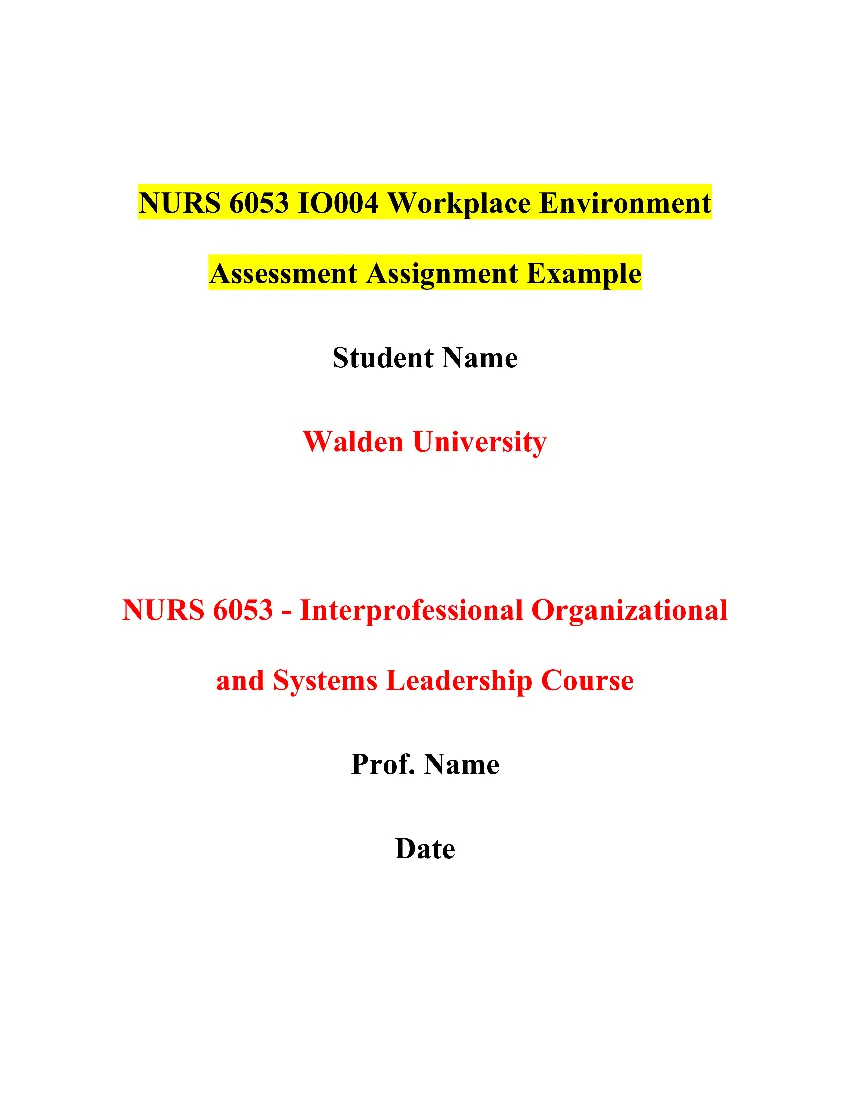 NURS 6053 IO004 Module 4 Assignment: Workplace Environment Assessment
NURS 6053 IO004 Module 4 Assignment: Workplace Environment Assessment

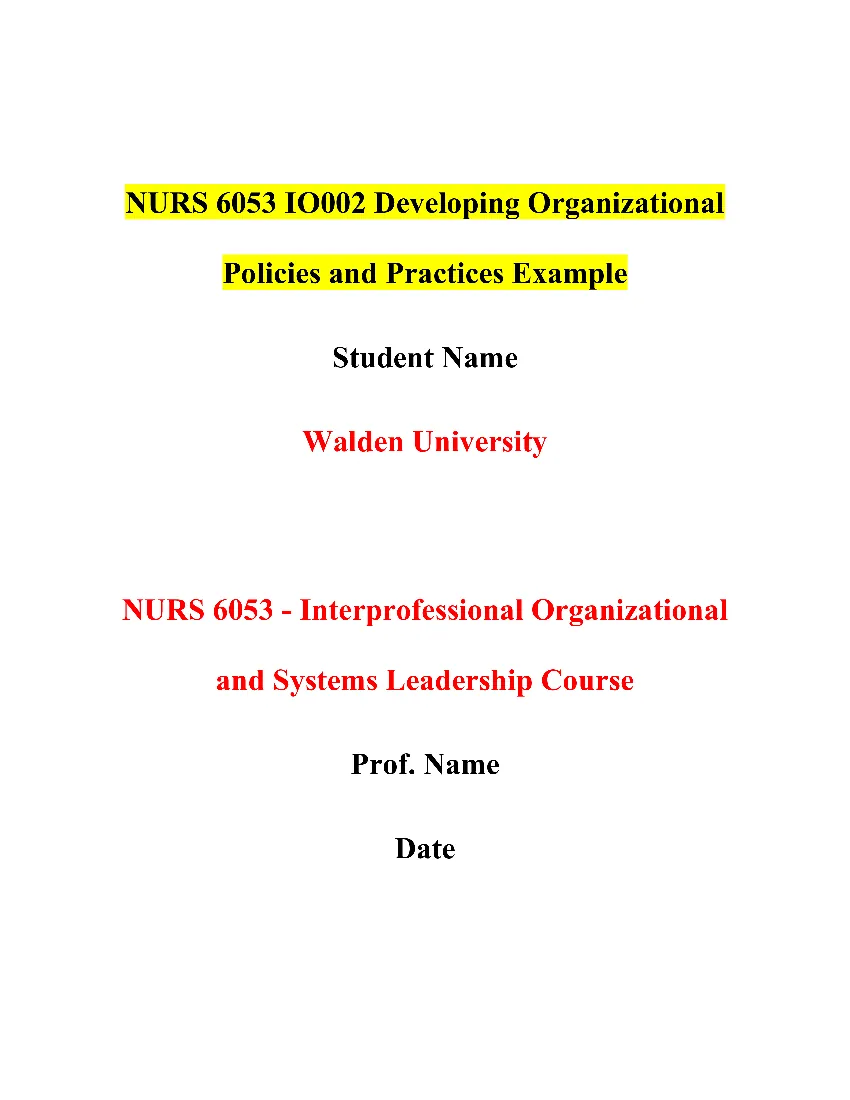 Assignment: Developing Organizational Policies and Practices
Assignment: Developing Organizational Policies and Practices
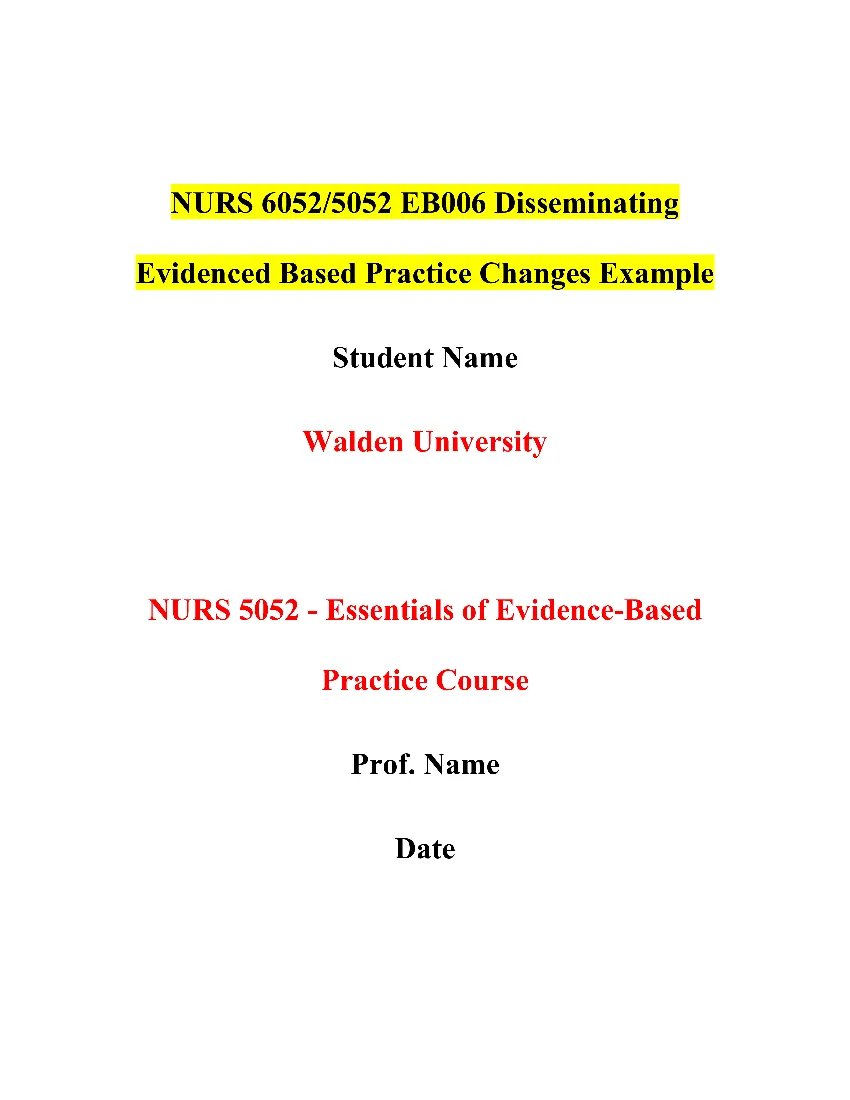 EB006 Disseminating Evidence-Based Practice (EBP) Changes Assignment
EB006 Disseminating Evidence-Based Practice (EBP) Changes Assignment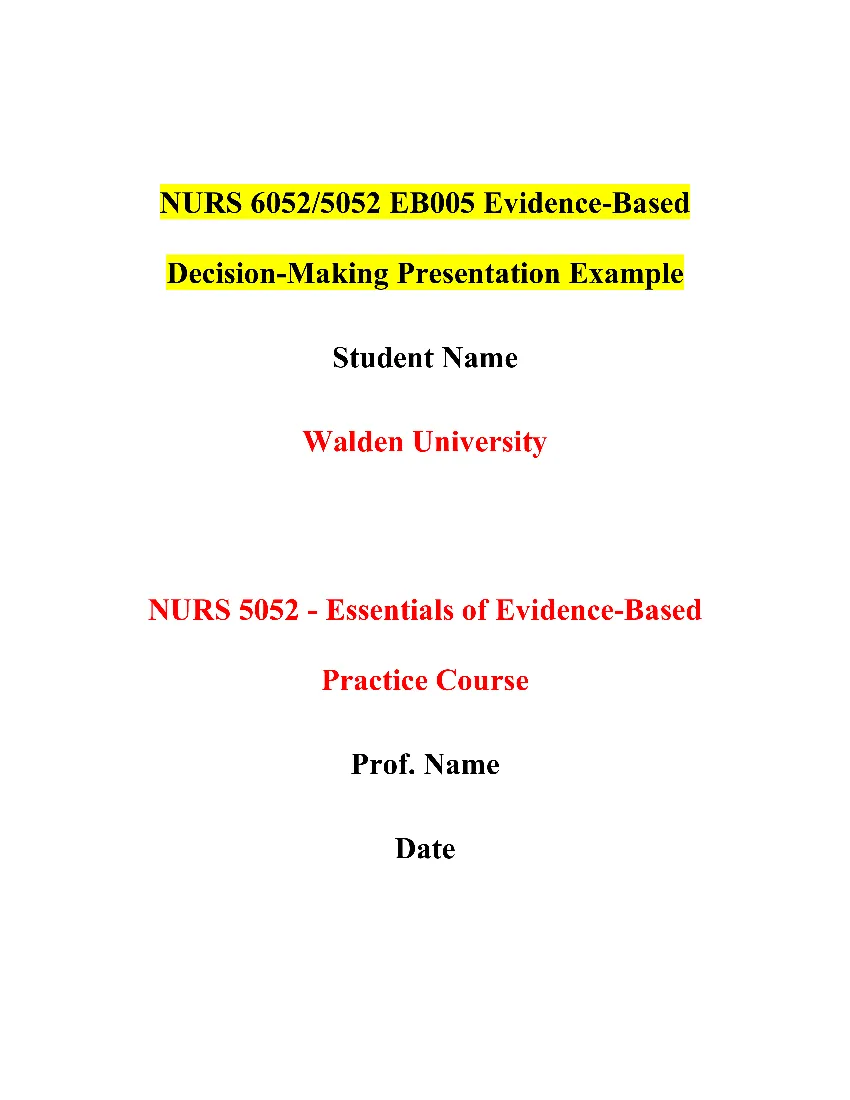 EB005 Evidence-Based Decision-Making Presentation Assignment
EB005 Evidence-Based Decision-Making Presentation Assignment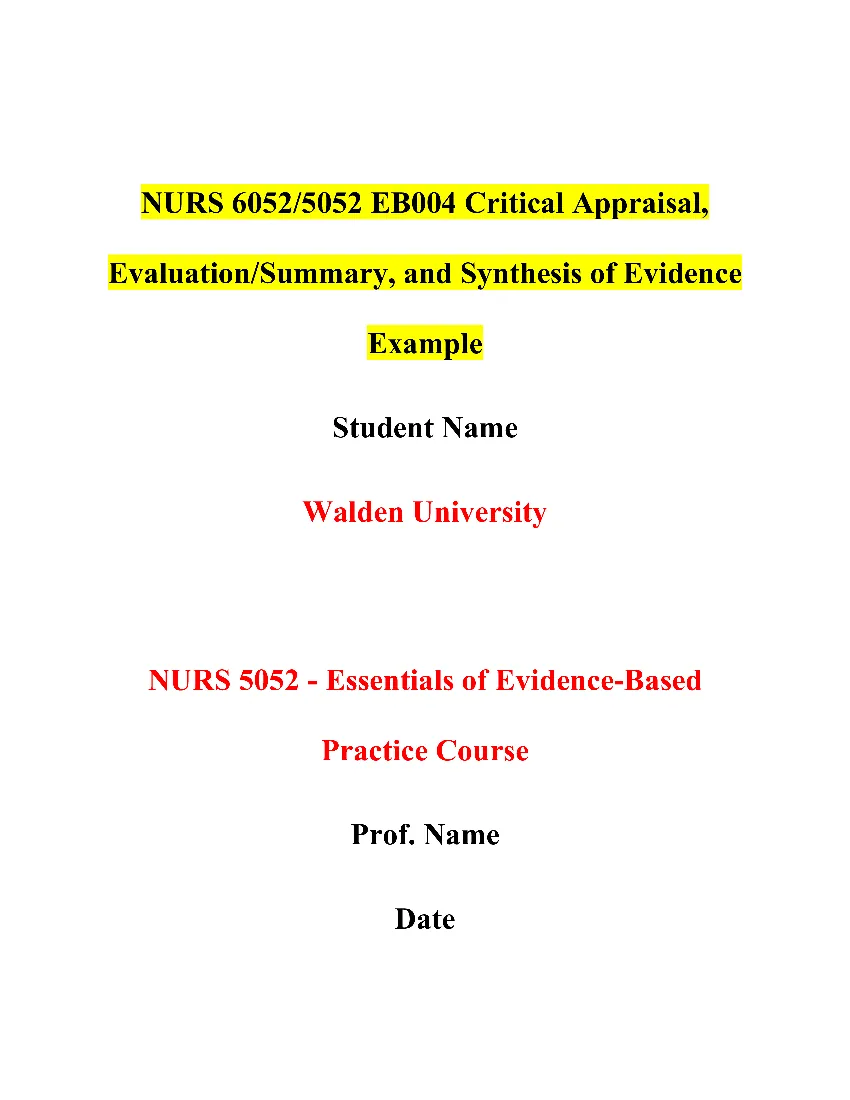 EB004 Critical Appraisal, Evaluation/Summary, and Synthesis of Evidence Assignment
EB004 Critical Appraisal, Evaluation/Summary, and Synthesis of Evidence Assignment